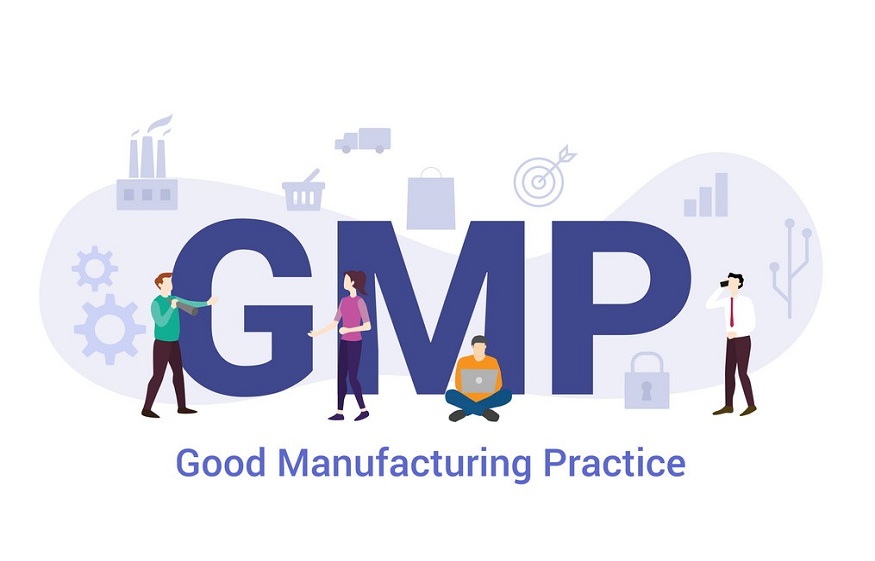Reinforce good manufacturing practices within your organization by understanding GMP guidelines and making the most of current technologies.
What is GMP?
Good Manufacturing Practices or GMP is a system comprised of processes, procedures, and documents that ensure that industrial products, such as food, cosmetics, and pharmaceuticals, are consistently manufactured and controlled in accordance with the standards of defined quality. Implementing GMPs can help reduce loss and waste, avoid recalls, seizures, fines and jail time. Overall, it protects both the company and the consumer from negative food safety events.
GMPs examine and cover every aspect of the industrial process to guard against any risk to products, such as cross-contamination, tampering and mislabelling. Areas that can influence product safety and quality and are covered by GMP guidelines and regulations are:
What is the difference between BPF and BPFa?
Good Manufacturing Practices (GMP) and Current Good Manufacturing Practices (GMP) are, in most cases, interchangeable. GMPs are the basic regulations promulgated by the World Health Organization , to ensure that manufacturers take proactive measures to ensure the safety and efficacy of their products. cGMPs, on the other hand, were put in place to ensure continuous improvement in manufacturers’ approach to product quality. It involves a constant commitment to the highest possible quality standards through the use of state-of-the-art systems and technologies.
What are the 5 areas of Good Manufacturing Practices?
It is essential for companies to regulate GMPs in the workplace to ensure consistent product quality and safety. Focusing on the following 5 Ps helps maintain high standards throughout the production process.
Personnel
All employees are expected to strictly adhere to industry processes and regulations. All employees should undergo GMP training to fully understand their roles and responsibilities. Assessing their performance increases their productivity, efficiency and skills.
Products
All products must undergo constant testing, comparison and quality control before being released to consumers. Manufacturers must ensure that raw materials, including raw products and other components, have clear specifications at every stage of production. The standard method must be followed for the packaging, control and allocation of sample products.
Processes
Processes must be properly documented, clear, consistent and distributed to all employees. Regular evaluation should be conducted to ensure that all employees are complying with established processes and meeting the standards required by the organization.
Procedures
It should be communicated to all employees and followed consistently.
Premises
Premises must always be clean to avoid cross-contamination, accidents and even deaths. All equipment should be placed or stored correctly and calibrated regularly to ensure that it is capable of producing consistent results to prevent the risk of equipment failure.
Apply/implement standard operating procedures and work instructions.
GMP regulations are mandated by the European medicines agency to regulate the production, verification and validation of manufactured products and ensure that they are effective and safe for distribution in the market.
Poor hygiene, poor temperature control, cross-contamination and adulteration at any stage of the manufacturing process are all examples of how a manufactured product that does not comply with GMPs can have fatal consequences. for consumers. See sources of GMP regulations and preamble by country here.
Standards
GMP standards are developed to enhance the safety of manufactured products, including pharmaceuticals, and to ensure consumers of the highest possible quality. Compliance with GMP standards not only has a positive impact on companies’ reputation, but also reduces batch recalls and negative consumer reports. Below are 4 steps you can take to meet GMP standards:
Quality team
Have a team of qualified employees who will focus on improving current procedures and complying with GMPs. Members will conduct operations quality assessments to identify problems and develop appropriate corrective actions. Part of the team’s responsibility will also be to carry out regular monitoring of instruments, equipment, processes and personnel skills.
Validation
Validation is the documented act of demonstrating instruments, processes and activities that are regularly used or performed. This helps to check if they are working as expected. GMPs can involve a number of things to validate, but it is good to focus on A surprise audit from time to time can help to get a clearer picture of what is going on in the establishment. Identify the root causes of the non-compliance and take action before the problem becomes bigger. Learn more about best practices for GMP audits .
Compliance Training
Help staff better understand GMP and continually improve operations or systems in place to ensure standards are GMP. All employees should receive training in record keeping, hygiene, proper equipment handling, labeling, and standard operating procedures to minimize errors and maintain compliance.
Guidelines and Basic Concepts
The GMP guidelines are a set of principles that help manufacturers to implement an efficient industrial process and to ensure that quality is integrated into the organization and the processes concerned. GMP guidelines are generally flexible, with countries having their own legislation to comply with local GMP guidelines and principles.

